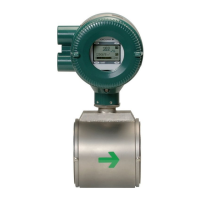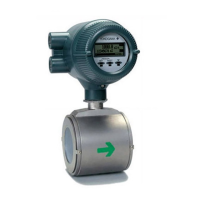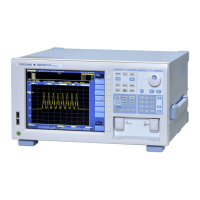<5. Functions>
48
IM 01E21A02-03EN
Alarm
Adetectederrorcanbenotiedasanalarmorwarning.Thisfunctioncanshowtheerrorstatus
based on NAMUR NE107 by setting parameters. It is also possible to keep alarms that occurred
in the past as a record and mask unnecessary alarms so that they are hidden on the display.
For details about the alarm contents and setting procedures, refer to Section 5.6.
Display
This display supports multiple languages, and the language to show on the display can be
selected. This function can also show the time changes of the selected parameter in a trend
graph.
For details about settings of the display, refer to Section 5.7.
NOTE
The language on the display is set to English at shipment from the manufacturing factory. If
necessary, select the adequate language referring to Subsection 5.7.1.
Themenupassofthedisplayonthismanualissetto“English”.
Device information
Theusercancheckparametersspeciedatthetimeofordering,modelnameandsuxcodeof
this product.
For details about how to check the device information, refer to Section 5.8.
Self check function
The self check function can be used to diagnose failures of the product or the process state. For
example, this function is useful for diagnosing the health of the product by using the electrode
adhesiondetectingfunction,sensoremptycheckfunction,orvericationfunction.
For details about the self check functions, refer to Section 5.9.
Test mode
Itispossibletoarbitrarilyspecifytheowvelocityandthevaluetobeoutputfromthepulse/status
terminal(IO2)andtotestaresponsefromtheproduct.
For details about the test mode, refer to Section 5.10.
Event management function
The backup function can store parameter settings in the built-in memory of the display. If the
optional code MC is selected, setting parameters can be stored in the microSD card supplied
withthisproductinadditiontothebuilt-inmemoryinthedisplay(displayboard).
The backup data can be used to restore settings of the product for which data is backed up or
duplicate settings to another product.
Due to the data logging function, up to four process values can be stored in the microSD card.
For details about each function of the backup, restore, and duplicate, and the data logging
function, refer to Section 5.11.

